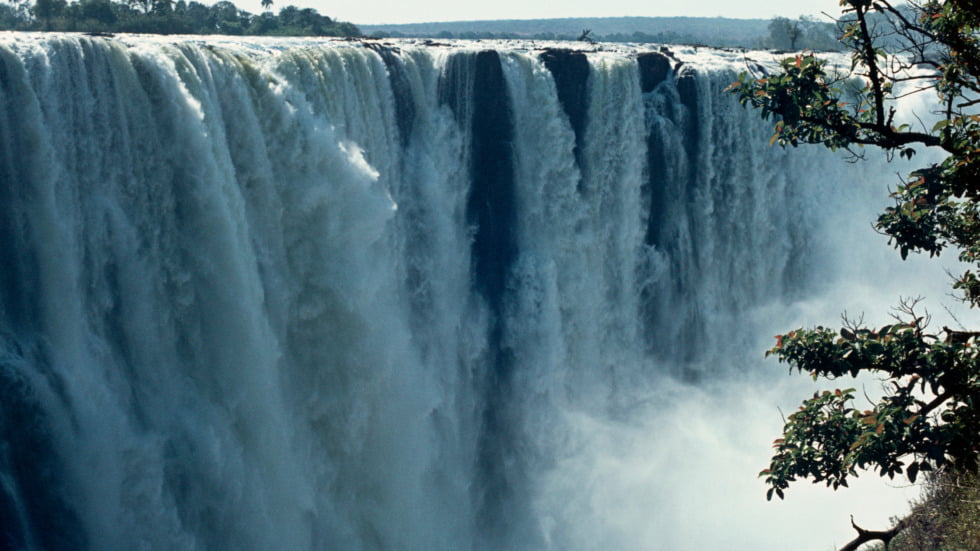
Zimbabwe has a vibrant history dating back as far as the 11th century. Probably its greatest claim to fame is the Mosi-oa-Tunya | Victoria Falls – the Smoke that Thunders – one of the planet’s largest waterfalls. As a landlocked country, it presents the ideal opportunity for safaris in an unspoilt environment of natural beauty and the broadest scope of wildlife viewing.
Thousands of safari lovers flock to Zimbabwe every year and are never disappointed: large reserves, World Heritage sites, the mysterious Zimbabwe ruins, well-trained and experienced safari guides, excellent accommodation, legendary Zimbabwean hospitality, and a plethora of wildlife. As a result, visitors have much to enjoy with regard to game drives, nature walks and water-based safaris, and many other activities for the truly adventurous traveller.
Consider the vast cross-border parks: the Kavango-Zambezi Transfrontier Conservation Area which includes Victoria Falls, Hwange and Lake Kariba; and the Great Limpopo Transfrontier Park which encompasses Gonarezhou. These massive parks demonstrate close cooperation between countries like Zimbabwe, Angola, Zambia & Mozambique, South Africa, Botswana and Namibia to preserve natural and ancient migratory channels for animals, while maintaining their traditional habitats.
Hwange National Park
The most famous and visited park is Hwange, which spans over 14 600 square kilometres, and provides a haven for over 100 mammal species and more than 400 recorded types of birds, many of which flock to the Mandavu Dam during the mid-year dry season. This is probably the best place to see the Big Five – elephant, rhino, leopard, lion and buffalo – although rhinos are only seen on rare occasions.
Matobo National Park
This protected area is notable for the fact that it is where the highly endangered black and white rhinos is making a comeback. In addition, its granite outcrops are the perfect hunting grounds for Zimbabwe’s reportedly highest concentration of leopards, as well as raptors like the swooping black and bateleur eagles. One of its most famous sites is the ‘balancing rocks’, where improbably large boulders are stacked up without mortar or supports.
Gonarezhou National Park
Way down south of the country, Gonarezhou is off the beaten track. Its most famous landmark is the stunning red sandstone Chilojo Cliffs, which glow red in the setting sun and provide a dramatic backdrop for late afternoon sundowners. Another highlight is the Chivilia Waterfalls, which flow fastest during the summer rainy season.
Mana Pools National Park
Mana Pools boasts large pools that support a plethora of wildlife and activities like canoe safaris – certainly an excellent way to see hippos, elephants, crocodiles and aquatic birdlife like herons, jacanas and terns. It’s also one of the best places in Southern Africa to see the endangered wild dog often referred to as ‘painted wolves’.
Matusadona National Park
Situated on the southern shore of Lake Kariba, Matusadona is a remote region accessible only by light aircraft, 4×4 convoy or boat. But it is considered one of the country’s hidden gems. It is a haven for endangered black rhinos, elephants, buffalo and renowned lion prides.
Victoria Falls
The iconic and biggest attraction in Zimbabwe, the Vic Falls present as the largest in the world when you combine their height and width. Fed by the Zambezi River, they provide the intrepid with superb white-water rafting opportunities, swimming in Devil’s Pool on the precipice, bridge swinging, bungee jumping, and for the more cautious, some spectacular and relaxing sunset cruises.
Lake Kariba
A man-made dam built to supply hydroelectric power to Zimbabwe and Zambia, Kariba sports many upscale houseboats, and wonderful birding opportunities. Somewhat surprisingly, Kariba is a great place for a ‘beach holiday’ in the midst of safari country.
Great Zimbabwe Ruins
Once the trading hub for the Kingdom of Mutapa and a world heritage site, these mysterious buildings have been a matter of conjecture for many decades. The local Shona people are thought to have begun building the Zimbabwe Ruins in about the 11th century. Thousands of stones were carefully dry-packed into intricate patterns, towers and staircases. Between the 13th and 15th centuries, at least 20 000 people lived here on a site that was 1 780 acres / 722 hectares big. So important and valued are these ruins that the entire country is named after them, Zimbabwe meaning ‘Great Houses of Stone’.
Best times to visit:
Game viewing: The best time for game viewing is during the dry winter months, from about May to October. The vegetation thins out significantly, making the animals easier to see. A number of water sources dry up, meaning they don’t move far from the remaining ones, making them easier to find. It is cooler during the day, and there are fewer bugs about.
Victoria Falls: are most spectacular around February to May, or summer to late autumn.
With our vast experience of touring Zimbabwe, we can design a tailor-made itinerary for camping or glamping throughout the whole of Zimbabwe.
Heuningland: African & Karoo tours to stir the heart and lift the soul
We are proudly South African and have a fervent love of the Great Karoo, its people and its unique vegetation and animals. We are passionate conservationists of nature and would like to share our knowledge acquired through years of travel and touring experience. We are therefore able to offer custom-designed and distinctively different tour options:
- Hiking/camping trails or guided self-driving tours through the ancient landscape of the Karoo.
- Tailor-made safaris to any destination in South Africa, Namibia, Zimbabwe, Zambia, Mozambique, and Botswana.
Find out more at: www.heuningland.com




